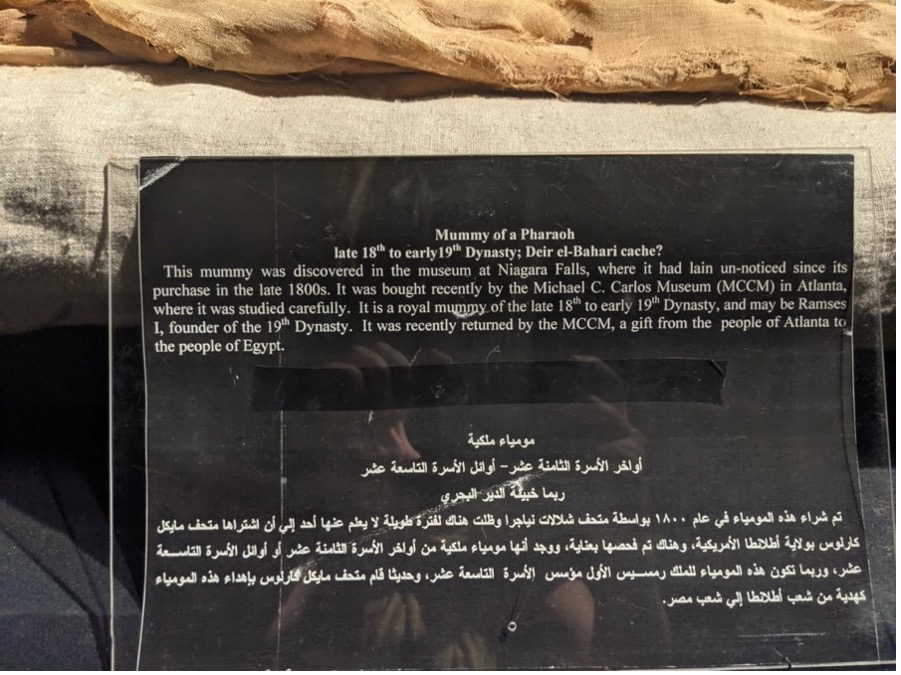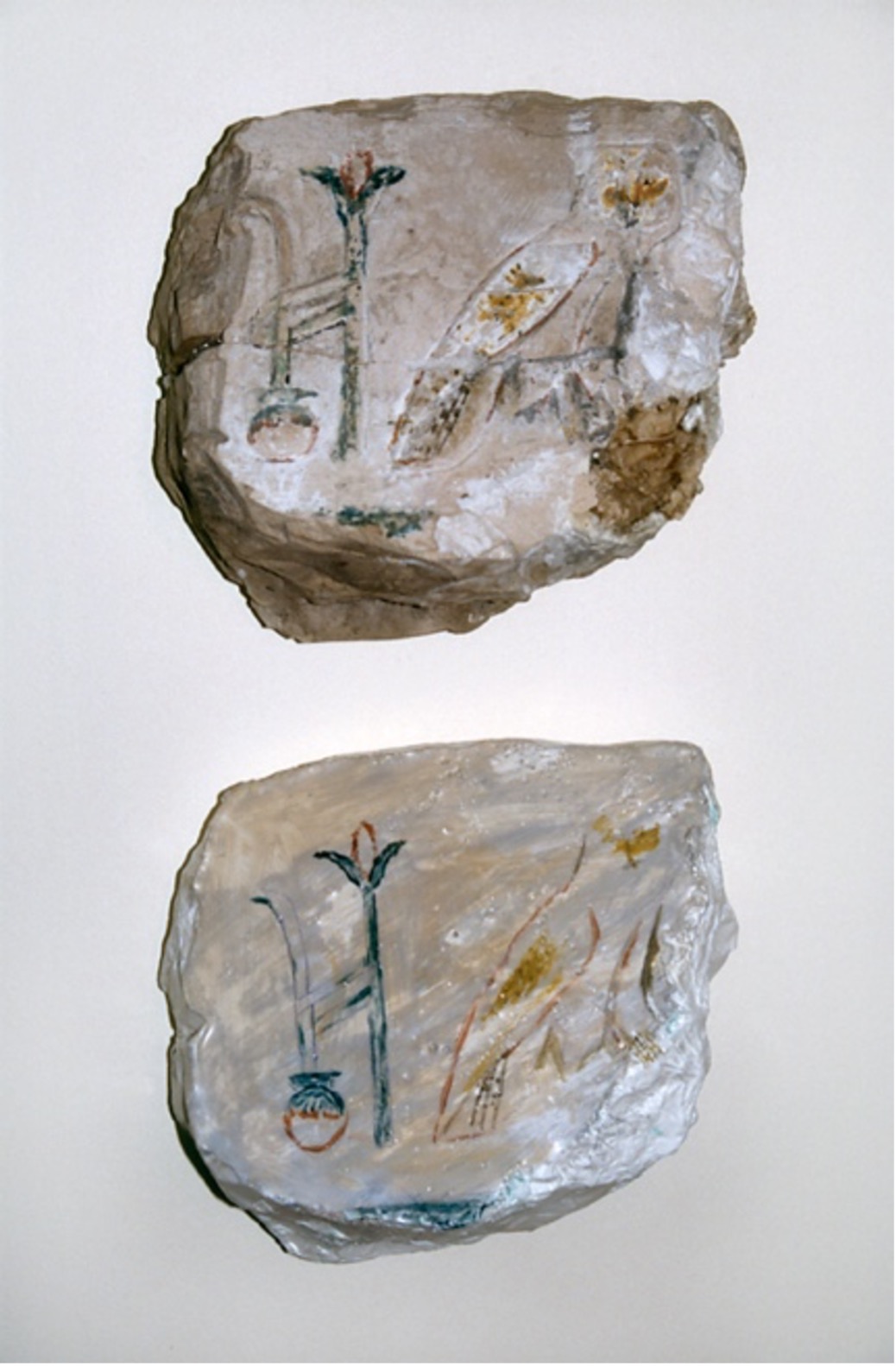October 2003

On October 4, 2003, the Michael C. Carlos Museum returned a mummy to Egypt after extensive research could not rule out the possibility he was an Egyptian king.
Acquisition Background
In 1999, the Carlos Museum acquired over 150 ancient Egyptian objects and mummies from the Niagara Falls Museum in Ontario, Canada. Sydney Barnett, son of the Niagara Falls Museum founder Thomas Barnett, traveled to Egypt three times beginning in 1854 to purchase objects and mummies for the family museum. While these objects left Egypt well before the export regulations imposed in 1912, one mummy warranted further provenance research and study.
Investigative Research
Among the Niagara Collection was one unwrapped mummy with his arms crossed right over left on his chest, a pose reserved for royal mummies for much of Egyptian history. The pose, coupled with the high quality of mummification, suggested that the Niagara mummy could be that of an Egyptian king.
Once at the Carlos, the museum began extensive research with colleagues from Emory University and abroad to determine the identity of the mummy. Through in-depth physiological research of the mummy, including x-rays, CT scans, and carbon dating, in collaboration with the expert opinions of Egyptologists, the museum could not conclusively identify the Niagara mummy.
Decision
Given that the museum could not exclude the possibility of him being a royal mummy, the museum returned him to Egypt on October 4, 2003, where he is now displayed at the Luxor Museum in his own private room.
April 2003

In April 2003, the Michael C. Carlos Museum returned four painted limestone fragments to Egyptian authorities following research that confirmed the fragments originated from the tomb of Seti I.
Acquisition Background
In 1999, the Carlos Museum acquired over 150 ancient Egyptian objects and mummies from the Niagara Falls Museum in Ontario, Canada. Sydney Barnett, son of the Niagara Falls Museum founder Thomas Barnett, traveled to Egypt three times beginning in 1854 to purchase objects and mummies for the family museum. While these objects left Egypt well before the export regulations imposed in 1912, a group of four painted limestone fragments warranted further provenance research and study.
Investigative Research
The four painted limestone fragments were suspected to have originated from the wall decoration of the tomb of King Seti I (ca. 1290-1279 BCE). Located in Egypt’s Valley of the Kings, Seti I’s tomb (KV 17) was opened in 1817 and suffered extensive damage and looting in the subsequent years. If the Niagara fragments did come from the royal tomb, the Carlos Museum felt they should be returned to Egypt due to the high probability they had been removed from the walls illegally.
To confirm the fragments were from the tomb of Seti I, Carlos conservators made plastic molds of the fragments which were painted to mimic the hieroglyphs, decoration, and stone quality of the original fragments. The molds were taken to Egypt to be matched up, in consultation with Egyptian archaeologists and officials, against areas of loss on the walls of Seti’s tomb.
Decision
Once the fragments were confirmed as originating from the tomb of Seti I, the four original painted limestone fragments were returned to Egyptian authorities on April 30, 2003.




